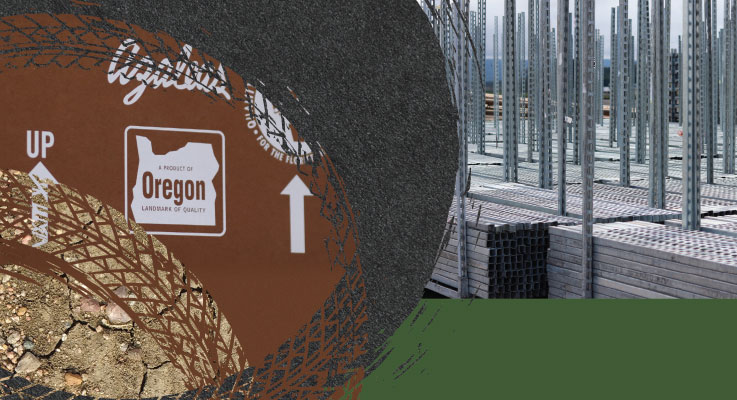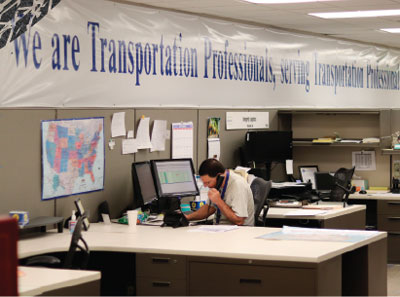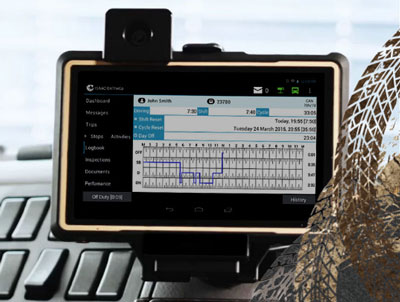
Nurseries work closely with shippers to keep their products rolling
Here’s something to think about: The top agricultural commodity in Oregon is nursery and greenhouse products. In 2018, nursery and greenhouse sales in the Beaver State topped $996 million — a quarter-of-a-million dollars higher than the No. 2 commodity, cattle — making Oregon one of the leading nursery states in the entire country.
Here’s something else to think about: Of those sales, more than 75 percent were made to customers outside the state, with a healthy share of those east of the Mississippi River.
So, on top of contending with Mother Nature, a constant need for labor, consolidation in the marketplace, economic swings and other factors, Oregon nurseries also have to find the most efficient and effective ways to get their products to customers across the U.S. That alone is not always easy.
Throw in a shortage of truck drivers and relatively new regulations that prevent drivers from logging as many miles as they used to in a day, and you’ve got a challenging freight scene.
But like the nursery business in general, the movement of goods ebbs and flows. Driver shortage and tighter regulations aside, the nurseries that have been able to adapt to the new reality and build solid relationships with top-notch freight brokers and shippers are finding ways to keep their plants moving along just fine.
“The transportation and nursery industries have weathered a lot together,” said Matt Nease, general manager of Northland Express Transport, a transportation firm with locations in Oregon and Michigan specializing in nursery shipping for close to 40 years. “Whether it’s a spike in fuel or a weather incident, we will always make it through.”
Short drive

Photo by Bill Goloski
One of the most pressing issues in the freight sector at present is a shortage of drivers. Whether that shortage is emerging, in full effect or about to manifest is up for debate, but it’s definitely an issue at the forefront.
Nease said that in the general freight market, 2019 is playing out differently than 2018. Last year, the economy was superheated; there were a lot of products to move and not enough trucks — or drivers — to move them. That’s cooled off a bit in 2019, at least in the general freight market, but the complexities involved in shipping nursery products have kept demand high in the sector.
“Nursery freight is complicated,” Nease said. “There are long loading times; you need refrigerated haulers; nursery products leave the trailer dirty. In all, there’s a smaller set of drivers.”According to the American Trucking Association, the driver shortage, especially long-haulers, is real. In 2015, the ATA pegged the shortage at 45,000 drivers in the U.S. It was forecast to hit 60,000 in 2018.
“There’s definitely a driver shortage right now,” said Dale Parra, sales manager at Truck Transportation Services in Clackamas. “I think it’s a generational thing, but it’s also that people don’t want to be away from home as much anymore. People have changed and want quality of life more than money.”
Having fewer drivers can make it more difficult for brokers to find haulers for nursery products. That, in turn, can cause shipping rates to rise and timelines to stretch.
“Freight costs are a really big concern and it does affect whether we are able to sell our product,” said Laurie Rosa, logistics coordinator at Woodburn Nursery & Azaleas. “I know on the dormant side, when shipping to wholesale nurseries, the freight can price them out altogether. We are very concerned about that in shipping.”
Logging miles

Photo courtesy of Wikimedia
Another big change in the shipping industry came in late 2017 when the Federal Motor Carrier Safety Administration implemented its electronic logging device (ELD) rule.
The devices log a driver’s hours. The new mandate restricts commercial drivers generally to no more than 11 hours of driving during a 14-hour period. After that, they are required to take 10 straight hours off.
While the mandate aims to increase safety, it’s also negatively impacted the shipping scene, including in the nursery realm.
“The biggest impacts with delivery times are the ELDs,” said Matt Frederick, logistics coordinator and owner at K&M Distribution, a transportation broker headquartered in Rogue River, Oregon. “Drivers were getting 750 to 1,000 miles a day and are now getting 650 to 700. There have been some problems with that. We’ve had to make some serious adjustments on the way we’re shipping and even on the days we’re shipping.”
Rosa said when the ELD rule first went into full effect, she saw shipping prices spike right away.
“We were trying to get a full load into Florida, and we were used to paying in the high $7,000s or $8,000,” she said. “I was getting quotes of $13,000. It was just … disrespectful.”
Friendly basis
While the ELD impact has moderated some, it’s still something that many drivers and shippers are adjusting to. Nurseries, too, are adjusting not only to the new world of shipping under the ELD regulations, but all of the other factors that impact the shipping of nursery products.
Finding fast and efficient ways of loading and unloading plants has long been an obstacle for the nursery industry. But the more prepared a nursery is for a shipment, the smoother the process can go.
“The good nurseries are organized, well-prepared and have the order ready to go for you,” Parra said.
The even better nurseries go out of their way to accommodate drivers as much as possible. Nease said some nurseries have carved out spaces where truckers can park and sleep for the night so their clocks can start fresh in the morning rather than continue to run while they’re heading back to a truck stop. Others offer drivers showers, bathrooms and a place they can heat up food.
“The nursery operators that really have made themselves stand out are those who have taken the time to do out of the way to make themselves trucker friendly,” Niese said. “Being trucker friendly is so critical. It pays dividends.”Communication is also key in ensuring a smooth shipping process. That’s become more convenient in the age of tracking apps, texting, smartphones and other advances in technology. Joel Mandel, operations manager, west coast, for Northland Express Transport, said Northland works hard to identify where freight is coming from, what the seasonality of it is and any other details that would be important to know when arranging shipping.
“Working hand in hand with the nurseries is crucial,” he said. “We try to find out as many details as we can so that we can relay that to our carriers.”Another helpful aspect for Mandel and Northland is that close to 40 percent of its staff has come out of the nursery industry. That gives them firsthand experience and knowledge that’s important to know when arranging shipping for nursery products.
In the end, the shipping aspect of the nursery industry has its own set of complexities that can make for a challenging process. But finding the right partners, communicating and working together can make it a lot more productive and successful for everyone involved.
“It’s definitely a unique
industry,” Parra said. “A lot of great people work in the nursery industry.
It’d say that out of all the industries, the nurseries are the nicest people to
work with — and the most understanding. It makes it all work really well.”
Jon Bell is a freelance journalist who writes about everything from craft beer and real estate to the great outdoors. His website is www.jbellink.com. He can be reached at [email protected].



